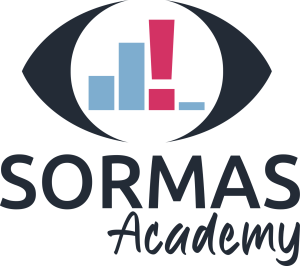SORMAS is a comprehensive system for managing and tracking events related to outbreaks.

Keypoints
Events in SORMAS can be signals, medical tests, outbreaks, or other happenings related to an outbreak
People involved in events can be created and documents can be saved
Templates for documents can be kept for downloaded
Events can be organized and structured in a hierarchy
People linked to the outbreak can be listed as event participants
Events can be searched, filtered, and sorted in the event list
New events can be added with details and assigned a special number
Duplicate detection is important in SORMAS to avoid creating the same thing twice.
The system checks the similarity of names for duplicate detection.
People are considered duplicates if they have similar names, the same gender, and the same birthday.
The system recognizes when first and last names are switched and considers letters like UE/Ü as the same.
A person needs to be connected to at least one case, contact, or event participant.
Event participants can be connected to cases and contacts for further monitoring.
Documents can be stored and organized using the ’Store document’ button
Events in SORMAS can be grouped as main events and smaller events to organize outbreaks
Summary SORMAS: A Comprehensive System for Managing Outbreak Events
SORMAS is a system that allows for the creation and management of events related to outbreaks. These events can include medical tests, outbreaks with multiple cases, and other relevant happenings. Participants and documents can be added to events, and templates for documents can be saved. The system allows for organizing events in a hierarchy and provides details about the location and organization of events. People linked to the outbreak can be listed as event participants, even if they didn’t have close contact with the infected person. The event list can be filtered and sorted, and specific events can be searched for using various criteria. The system also allows for the creation of new events, with details such as event type, description, and source of information. Different event statuses can be chosen, including event, screening, and cluster. The system also provides options for marking events as dropped or for tracking progress. It is important to choose a specific name for events to easily find them later. Event participants can be added manually or imported from lists, and their details are displayed in a table. Events and event participants can be deleted or closed, with deletion times set if needed. Overall, SORMAS provides a comprehensive and organized approach to managing and tracking events related to outbreaks.
Managing Duplicate Entries and Linking People in SORMAS System
The SORMAS manual explains how the system detects and handles duplicate entries for cases, contacts, and event participants. It uses various criteria to determine if two entries are similar, such as name similarity, gender, and date of birth. The system also recognizes when first and last names are switched and considers certain variations in names. If duplicates are found, users with special permission can merge them into one entry. The system also allows for linking people to cases, contacts, or events, and checks for existing connections to prevent duplicate entries. When creating a new case for someone who attended an event, the system checks if the person is already part of the event and prompts the user accordingly. The manual also explains how to view and manage event participants, create contacts for close contacts, and connect documents and tasks to events.
Managing Documents and Events in SORMAS: A Comprehensive Guide
Events in SORMAS can be grouped as main events and smaller events, allowing for better organization of outbreaks based on topic, location, or chronological order. We will explain how to link events and search for specific events using their ID, title, or description. New events can be created and connected to existing events. Event groups can be created, changed, and connected by different users, with administrators having the ability to remove or close event groups. The manual also mentions a special editing mode for administrators to edit multiple events at once.
